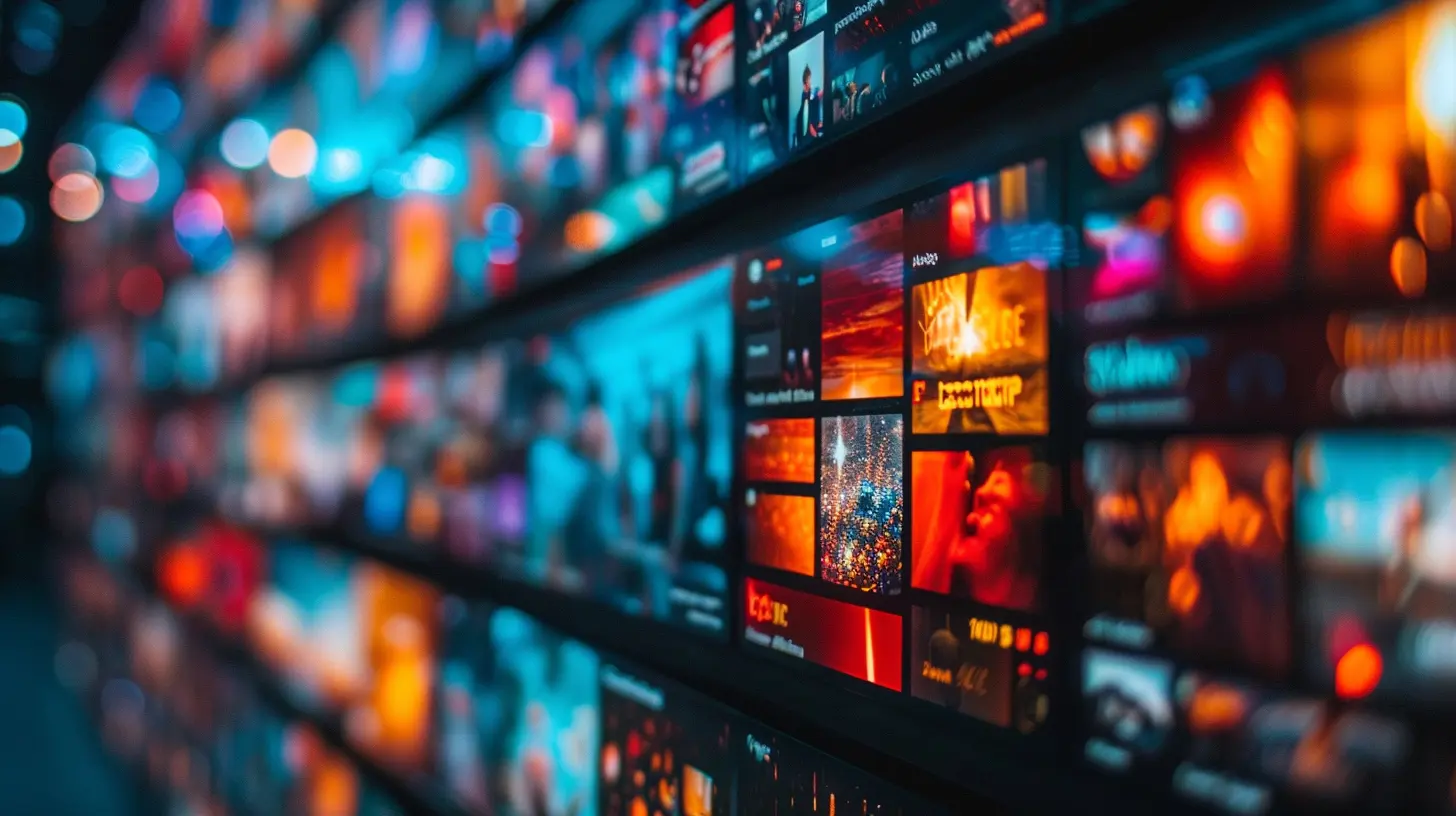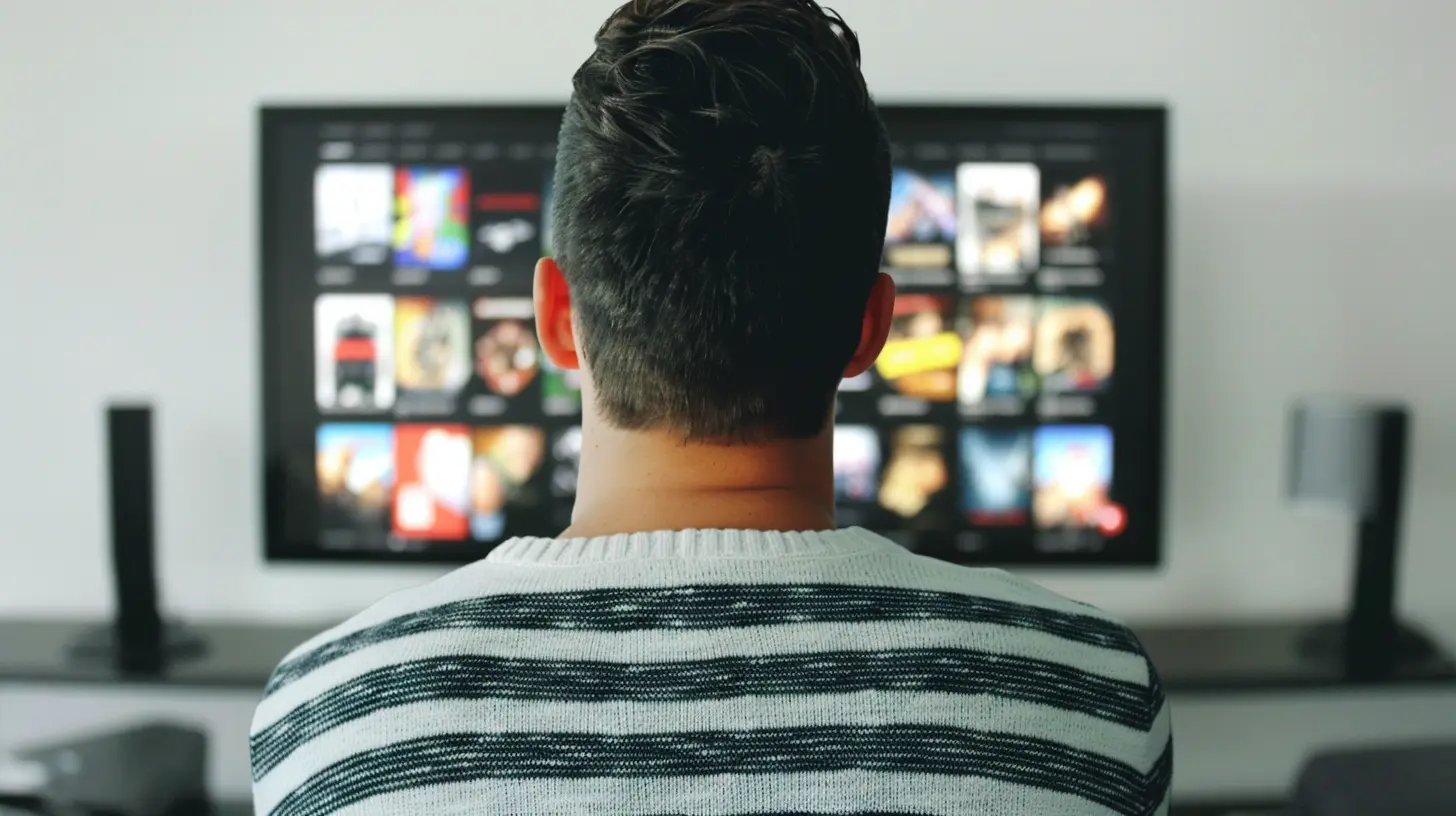How to Stream 4K Content Seamlessly on Your Smart TV
16 May 2025
In today's world of high-definition entertainment, streaming 4K content is no longer a luxury—it's quickly becoming the standard. With more services offering 4K Ultra HD shows and movies, you might be wondering how to get the best experience on your smart TV without annoying buffering or hiccups. Well, you’re in luck! We’re going to break down everything you need to know about streaming 4K content seamlessly on your smart TV, so you can sit back, relax, and enjoy that razor-sharp picture quality.

What Exactly Is 4K, Anyway?
Let's start by clarifying what 4K actually means. 4K refers to the resolution of the content you're watching. Specifically, it means there are about 8 million pixels on your screen, arranged in a 3840 x 2160 grid. That's four times the resolution of 1080p, which used to be the gold standard for HD. What does that mean for you? In simple terms, it means sharper images, richer colors, and a lot more detail in every scene.But here’s the catch: you need the right setup to truly enjoy 4K content. Without the proper hardware, internet speed, and streaming service, your 4K experience could feel like watching a scratched DVD on an old tube TV. So, let’s dive into what you need to get that buttery-smooth 4K stream going.

1. Ensure Your TV Supports 4K
This might sound obvious, but you’d be surprised how many people try to stream 4K content on TVs that don't even support it. Not all smart TVs can handle 4K, so the first thing you need to check is whether yours does.How to Check If Your TV Is 4K-Compatible:
- Look up the model number: You can usually find this in the settings of your TV or on the manufacturer’s website.- Check your TV’s resolution settings: If you can adjust the resolution to 3840 x 2160, congrats! You’re ready for 4K.
- Double-check the HDMI ports: If your TV is 4K-compatible, it should have HDMI 2.0 or HDMI 2.1 ports. These ports can handle the high bandwidth required for 4K streaming.
If your TV is not 4K-compatible, well... it might be time for an upgrade. But if your TV is already set for 4K, keep reading!

2. Get the Right Streaming Device or App
Even if your TV supports 4K, you’ll need to make sure your streaming device or app does too. Most smart TVs come with built-in apps, but not all of them support 4K streaming. This is where things can get a little tricky.Popular Devices and Apps That Support 4K:
- Apple TV 4K: As the name suggests, this device is designed for 4K streaming and works with most modern smart TVs.- Roku Ultra: Another excellent option if you're into streaming services like Netflix, Hulu, and Amazon Prime in 4K.
- Google Chromecast with Google TV: This little guy offers 4K streaming at an affordable price.
- Fire TV Stick 4K: Amazon’s Fire TV Stick is another popular choice, and it’s compatible with most streaming services in 4K.
If you prefer apps, make sure you’re using the latest version of your streaming service’s app. Netflix, Amazon Prime, Disney+, and many others offer 4K streaming, but you need to ensure your app is up-to-date to access those high-quality streams.

3. Check Your Internet Speed
Here’s the kicker: you need a strong and reliable internet connection to stream 4K content smoothly. 4K streaming uses significantly more data than HD, so if your internet speed is slow, you’re going to experience buffering, which is basically the enemy of smooth streaming.Recommended Internet Speeds for 4K Streaming:
- 25 Mbps: This is the minimum speed you’ll need for 4K streaming. However, if you have multiple devices connected to your Wi-Fi, you’ll want a higher speed.- 50 Mbps or more: For a flawless 4K experience, especially if you’re sharing the network with others, aim for 50 Mbps or higher. This ensures that your stream remains smooth even when other devices are using the internet.
Pro Tips for Boosting Your Internet Speed:
- Use a wired connection: If possible, connect your TV or streaming device directly to your router using an Ethernet cable. This eliminates any interference you might experience over Wi-Fi.- Upgrade your router: If your router is more than a few years old, it might not be equipped to handle the demands of 4K streaming. Consider upgrading to a modern router that supports faster speeds and better coverage.
- Reduce Wi-Fi interference: If you must use Wi-Fi, make sure your router is in the same room as your TV. Walls, floors, and even other electronic devices can interfere with your connection.
4. Optimize Your Streaming Settings
Once you’ve got the right TV, device, and internet connection, it’s time to make sure your streaming settings are optimized for 4K.How to Enable 4K Streaming:
- Netflix: Go to “Account” settings, then select “Playback Settings,” and make sure “High” is selected under “Data Usage per Screen.” You’ll also need the premium plan to stream in 4K.- Amazon Prime Video: Amazon automatically adjusts playback quality based on your internet speed, but you can ensure 4K by selecting content marked as "Ultra HD."
- Disney+: Similar to Amazon, Disney+ will auto-adjust based on your connection. Look for the “4K Ultra HD” label on supported titles.
- YouTube: When playing a video, click on the settings (gear icon) and select 2160p (4K) if available.
Keep in mind that not all shows or movies are available in 4K. Always check the title information before assuming it will stream in Ultra HD.
5. Don’t Forget About HDR
If you’re going to stream in 4K, why not go all out? Many 4K titles also come with HDR (High Dynamic Range), which enhances the color and contrast of the image. It’s the cherry on top of an already stunning picture.However, HDR isn’t automatic. Your TV must support HDR10, Dolby Vision, or another HDR format. Plus, just because a show is in 4K doesn’t mean it has HDR. Make sure to check for the HDR label when selecting content.
6. Manage Data Usage Wisely
Streaming in 4K is awesome, but it comes at a cost—literally. 4K content uses a lot of data, so if you have a data cap on your internet plan, you could find yourself hitting that limit pretty quickly.Here’s a quick breakdown:
- Streaming one hour of 4K content can use between 7 to 10 GB of data.
- Watching a two-hour movie in 4K might consume up to 20 GB of data.
How to Handle Data Caps:
- Monitor your usage: Many internet service providers (ISPs) offer tools to help you track your data usage. It’s worth checking out if you stream a lot.- Upgrade your plan: If you find yourself hitting your data cap frequently, it might be time to upgrade to an unlimited plan or at least one with a higher cap.
- Download content: Some streaming services like Netflix and Amazon allow you to download 4K content. This way, you can download the show or movie when connected to Wi-Fi and watch it without streaming it live.
7. The Final Touch: Sound Matters, Too!
While this guide is all about streaming 4K seamlessly, let’s not forget about sound. 4K visuals are fantastic, but they can fall flat without great audio. Many 4K titles also feature Dolby Atmos or other high-quality sound formats. If your home audio system supports it, make sure to enable these settings for a truly immersive experience.Wrapping It Up
Streaming 4K content on your smart TV can seem a bit complicated at first, but once you’ve got the right setup, it’s smooth sailing. Just remember that your TV, streaming device, internet speed, and settings all need to work together for the best possible viewing experience. So next time you settle in to watch your favorite show, you’ll know exactly how to avoid that dreaded buffering wheel and enjoy the crystal-clear, ultra-detailed world of 4K.Happy streaming!
all images in this post were generated using AI tools
Category:
Smart TvsAuthor:

Jerry Graham
Discussion
rate this article
3 comments
Karly Meyers
This article effectively highlights key strategies for streaming 4K content smoothly, emphasizing the importance of sufficient bandwidth and compatible devices. Furthermore, it would benefit from discussing potential pitfalls, such as network congestion and equipment limitations, to provide a more comprehensive guide for readers.
May 24, 2025 at 4:57 AM

Jerry Graham
Thank you for your feedback! I appreciate your suggestions and will consider adding a section on potential pitfalls in future updates.
Cecilia McManus
This article offers valuable insights into streaming 4K content effortlessly on smart TVs. I appreciated the practical tips on optimizing network settings and device compatibility. It’s a helpful guide for anyone looking to enhance their viewing experience without technical headaches.
May 19, 2025 at 4:50 AM

Jerry Graham
Thank you for your kind words! I'm glad you found the tips helpful for enhancing your streaming experience. Happy viewing!
Lara Cox
To stream 4K content seamlessly on your Smart TV, ensure you have a high-speed internet connection (at least 25 Mbps), update your TV's software regularly, and use a reliable streaming device if needed. Don’t forget to check your HDMI cables to support 4K resolution for optimal performance.
May 16, 2025 at 11:38 AM

Jerry Graham
Great tips! Ensuring a strong internet connection and updated software is key for a smooth 4K streaming experience.



